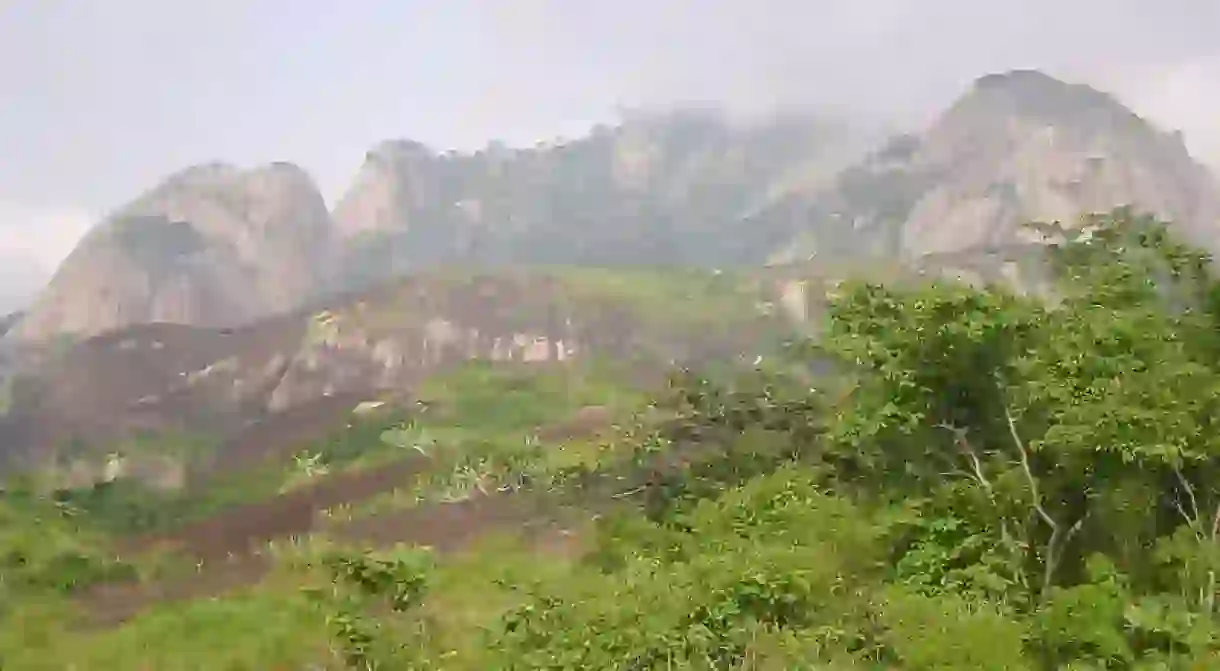The Best Hiking and Trekking Trails in Nigeria

It is becoming increasingly more acknowledged that a healthy lifestyle produces a truly happy body, mind and soul. Hiking and trekking are cheap and easy ways to stay fit, while offering numerous other health benefits and fitness solutions. From beautiful landscapes to nature’s very own abundance of serenity and pure goodness, here are some of the best hiking and trekking trails Nigeria has to offer.
Olumo Rock
Hiking Trail

Olumo Rock is a popular tourist attraction in Nigeria, located in Abeokuta, Ogun state. The historical rock holds a lot of cultural significance, and is a build-up of granite rocks that has been in existence for thousands of years. It is said to be 450 feet (137m) above sea level, however hiking just got easier thanks to the manmade stairs and crevices used to climb up the giant collection of rocks. From the top of the rock, you can view other tourists attractions in Abeokuta—the First Church of Nigeria, the Central Mosque, the River Ogu and the family house of the late Moshood Abiola.
Shere Hills
Hiking Trail
Jos city of Plateau state offers some of the finest and most breathtaking tourist attractions in Nigeria, and Shere Hills is just one of them. The scenic collection of sprawling and fascinating balanced boulders arranged in different formations like small rocks perfectly balanced on top of a big rock, is definitely a wonder of nature. The highest point is about 6,000 feet (1,829m) above sea level. Getting to the peak is challenging, but it rewards mountain climbers with a fantastic aerial view of the city and all it has to offer.
Idanre Hills
Hiking Trail
Estimated to be over 800 years old, the Idanre Hills are steep-sided, smooth and dome-shaped in nature. The majestic hills are located in the ancient town of Idanre, Ondo State of Nigeria. It is said in history that the inhabitants of the ancient town once lived on the hilltop. Today, the new settlement is at the base of the hills. No wonder the scenic hills was listed as a UNESCO World Heritage Site. To get to the top of the hill, tourists must climb 667 steps with five resting posts along the way.
Canopy Walk, Lekki Conservation Center
Botanical Garden, Hiking Trail, Park, Bridge

The Lekki Conservation Center in the city of Lagos, Nigeria, is the home of Africa’s longest canopy walk. The suspended bridge walkway in the midst of dense vegetation, measures 1,300 feet (400m) and covers a land area of 78 hectares—extending along the Lagos-Epe Expressway and ending up very close to the Atlantic Ocean. While the walk is not for the faint hearted, it is very safe and offers a panoramic view of a unique wildlife experience.
Olumirin Waterfall, Erin Ijesha
Hiking Trail
The sanctuary of purity and beauty is a twist to the normal hiking/trekking trails. The waterfall is a tourist attraction located in Erin Ijesha, Osun State, Nigeria. Olumirin has a therapeutic ambiance, thanks to the impressive seven-part cascades. which can be described as an assemblage of seven visibly unique levels. Nevertheless, climbing the various levels of the waterfall is not an easy task, but it presents an exciting twist for hikers.
Mount Patti
Hiking Trail
Nestled in the city of Lokoja, an adventurous climb to the top of Mount Patti, which is around 1,500 feet (460m) above sea level, will take you on an interesting hike to the summit with an incredible view of the city and the famous Rivers Niger and Benue. You’ll also get to see Lord Luggard’s rest place at the top of the hill, which was built around 1900. The then-colonial Governor General of Nigeria was said to have used the Rest House as a relaxation spot after his day’s activities.
Aso Rock
Hiking Trail

The Aso Rock is the largest and highest rock in Nigeria’s capital city, Abuja. Standing at about 1,300 feet (400m) above sea level, it is Abuja’s most noticeable feature, spreading wide across the horizon of the city. The rock encompasses the three major seats of power of the Federal Republic of Nigeria, therefore proper permission from the appropriate authorities must to be granted to climb the rock. It is also quite steep.













